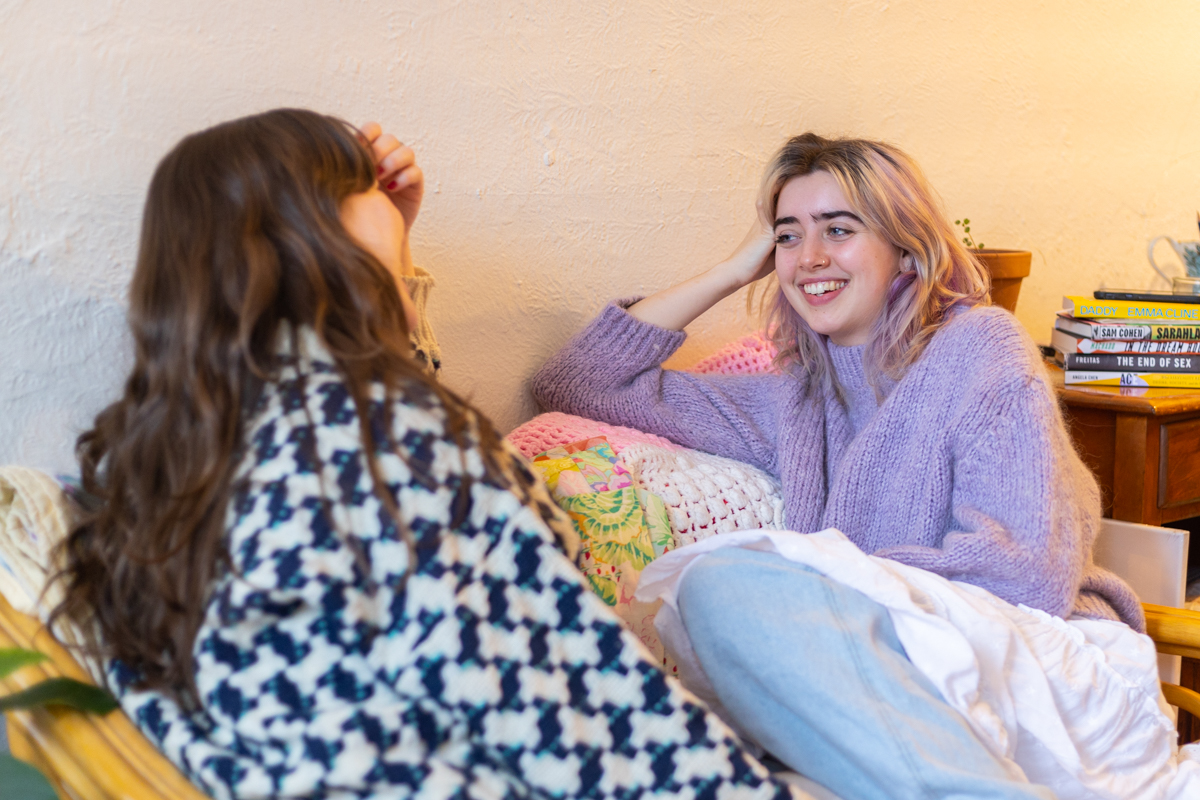A Concordia podcast that teaches us how vulnerability can connect us to ourselves and each other
Often when I think of Linneah Shanti, I think of all the things that have to do with feeling good. A feeling of good-ness that isn’t attached to something I can hold, no matter how much I adore croissants and cappuccinos. A feeling of good-ness that unwinds from budding empathy, love in bloom. A feeling of good-ness that, like her podcast, would be the worst thing to keep secret.
Originally from Ontario, Shanti is currently based in Montreal and in her third year of Interdisciplinary Studies in Sexuality at Concordia University. The two of us were introduced during
our first semester at university. A year and a half later, in January 2021, she started The Lily Pod.
The idea had been on her mind for a while before then, morphing itself from a yearning to create something special. What she ended up creating is now a space for learning and exploring, focused on the disentanglement of ideas and quenching curiosities.
When I asked Shanti to try and contain The Lily Pod to a set of defining words, she playfully replied with “Queering the existence of life.”
TC: So where did the name come from?
LS: The initial intention for the name came from my desire for this podcast to be a safe, peaceful, and loving place. I decided to take garden imagery — which for me evokes a sense of calm, safety, serenity, and welcoming. Flowers, water, and greenery have always played a big role in my feelings of belonging and safety, which I wanted the podcast to reflect.
‘Lily’ is [also] a name my partner calls me because it’s an acronym for “Linneah I Love You,” which felt really special given the loving space I wanted to create.
TC: Given that the podcast is something that is both yours and something you share — where does being vulnerable fit into this context?
LS: It fits in with how I and listeners confront our own questions, instincts, and learned ways of thinking about the world. In the process of thinking about and creating the episodes, I’m constantly confronted with how much I want to share and what I really think about something… putting my thoughts into the void can be both really scary but also really liberating.
I get a few messages a week from listeners interpreting what I’ve said in a really personal way, and I find this openness to vulnerability really special. It’s this cool cycle where this vulnerable experience for me is made public, then made personal to someone, and then reflected back to me… we’re all going through it together.
TC: You’ve explored so many topics throughout the last year, from desirability, to the male gaze, to polyamory, to the complexities of gender… Is there one topic that has stuck with you more than the rest?
LS: I immediately gravitate towards what it means to desire and to be desired in the unique context of our own individual identities… how this intermingles with gender, sexuality, the body, perceptions. What it means to understand our positionality and using this understanding to connect us even if our experiences aren’t identical.
TC: If there’s one episode you recommend to first time listeners, which one would that be?
LS: The polyamory one! It was the first collaborative episode and was recorded with two beautiful friends. It felt like I was doing something more than just sitting down and recording… and it reflected a lot of different themes from a queer perspective, really encapsulating what The Lily Pod is.
How to listen to The Lily Pod
My favourite place to listen to Shanti’s podcast is in my bedroom, in the midst of my process of getting ready to go somewhere. I often catch myself audibly agreeing with her, or suddenly hyper-focused on a new thought she’s helped me connect with.
Regardless of where I am when I hit play, I’ve found that by the end of each episode I’m always left feeling some type of new.
The Lily Pod is available on Spotify, Buzzsprout, and Apple Podcasts. You can find more of Linneah Shanti @linneahrae and @thelily.pod on Instagram.
Photos by Catherine Reynolds
